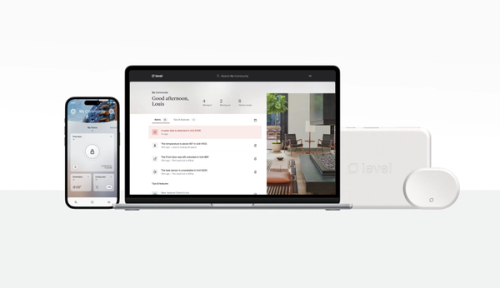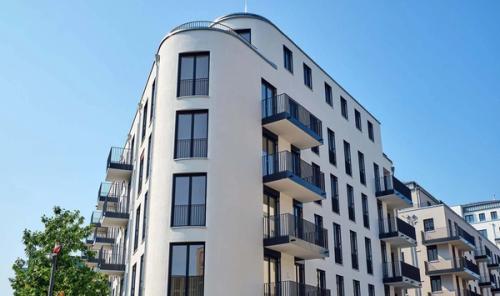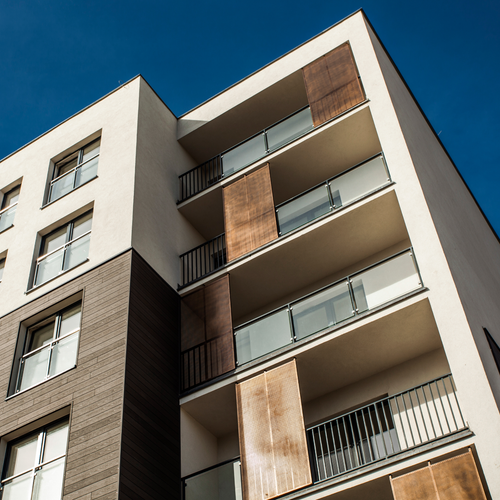March 18, 2024
Developer’s Guide to Differentiating & Future-Proofing New Construction

Key takeaways
- Abundant supply and softening rents necessitate a new approach to developing properties to gain a competitive edge.
- The best way to achieve that competitive edge is to strategically implement a modern technology infrastructure that delivers premium experiences.
- Choosing the right technology infrastructure today will prevent unnecessary costs and enable the elevated living experiences that residents expect now and into the future
Today’s realities necessitate a new approach
Developers in 2024 are facing an influx of new supply.
Data published by John Burns Research & Consulting in January 2024 shows that current new apartment supply amounts to roughly 1.4 million units — a 43% increase over the 10-year average annual supply of 980,000 units.
Data published by John Burns Research & Consulting in January 2024 shows that current new apartment supply amounts to roughly 1.4 million units — a 43% increase over the 10-year average annual supply of 980,000 units.
For multifamily developers, this influx of supply poses two particular challenges:
- It’s more difficult than ever to stand out to renters during lease up. This means a longer road to stabilization.
- There’s less revenue coming in as rents soften. This makes it harder to maximize exit value when you’re ready to sell.
Combatting growing supply requires a differentiator — something to set your property apart. With the right differentiator, you can command top-of-market rents without offering concessions or losing to competitors.
Under current market conditions where residents have plenty of options, the properties that win out offer distinct value beyond trendy coworking spaces and pet washing stations. Residents are increasingly drawn to the properties that offer a one-of-a-kind living experience.
But it’s equally important to keep an eye on the future. Making snap decisions today about what will set you apart right now could lower your exit value or saddle you with unnecessary costs to upgrade later.
So what’s the solution?
Savvy developers are turning to technology to set their properties apart. It makes sense: 82% of apartment residents say they want smart home technology.
But it’s not traditional plug-and-play smart home devices, like voice assistants and smart blinds, that are making an impact.
Residents don’t want an array of gadgets in their homes — they want technology that simplifies their daily routines. It’s why smart locks and smart thermostats are the top two in-demand smart devices, with more than twice the demand of tech like Google Home and Alexa voice assistants.
The bottom line: You can overcome present and future market conditions by using technology as a strategic differentiator.
The 3 keys to standing out & future-proofing your property with technology
Technology — specifically hard technology that requires physical installation as opposed to enterprise technologies like property management software — is an effective differentiator and will continue to serve as one in the future. But when evaluating hard technology, it helps to understand what you should actually be looking for.
The three keys to implementing technology that sets your property apart now and in the future:
- Choose technology that delivers a premium user experience
- Invest in integrated connectivity
- Work with experienced and accountable technology partners
1. Choose technology that delivers a premium user experience
Above all else, your smart tech needs to engage residents and create unparalleled experiences that anyone can navigate and enjoy, regardless of their age or level of experience with technology. Highlighting the differentiated value of those experiences is the key to drawing prospects to your property over a competitor’s.
In a December 2023 webinar sponsored by Cox Communities, Keagan Huerta, EVP of Asset Management at Sunroad Enterprises, refers to this approach as leading with value: “We don’t lead with a monetization mindset — we lead with a value creation mindset, and we believe that the value follows,” Huerta says. “If we create enough value for the residents, we think they’ll want to stay with us longer — and they’re likely willing to pay a little bit more overall for a better user experience.”
Before choosing any smart tech solutions, carefully assess the platform’s user experience. Apps and devices need to be engaging and intuitive. For example, a user-friendly interface makes all the difference when showing off technology during a tour because it helps prospects envision themselves enjoying those tech-enabled experiences in their daily lives.
In a December 2023 webinar sponsored by Cox Communities, Keagan Huerta, EVP of Asset Management at Sunroad Enterprises, refers to this approach as leading with value: “We don’t lead with a monetization mindset — we lead with a value creation mindset, and we believe that the value follows,” Huerta says. “If we create enough value for the residents, we think they’ll want to stay with us longer — and they’re likely willing to pay a little bit more overall for a better user experience.”
Before choosing any smart tech solutions, carefully assess the platform’s user experience. Apps and devices need to be engaging and intuitive. For example, a user-friendly interface makes all the difference when showing off technology during a tour because it helps prospects envision themselves enjoying those tech-enabled experiences in their daily lives.
Opt for a tech vendor whose platform signals premium living to residents.
This might look like:
- A premium, intuitive app that emulates leading consumer apps.
- A platform that enables the property to extend its branding into the app for a consistent experience.
- A solution that is deeply integrated with other systems — like building access control — to spare residents the hassle of juggling multiple apps and modes of access.
Your competitors might have smart tech in their buildings, but if the user experience is clunky or outdated, you’ll have the upper hand.
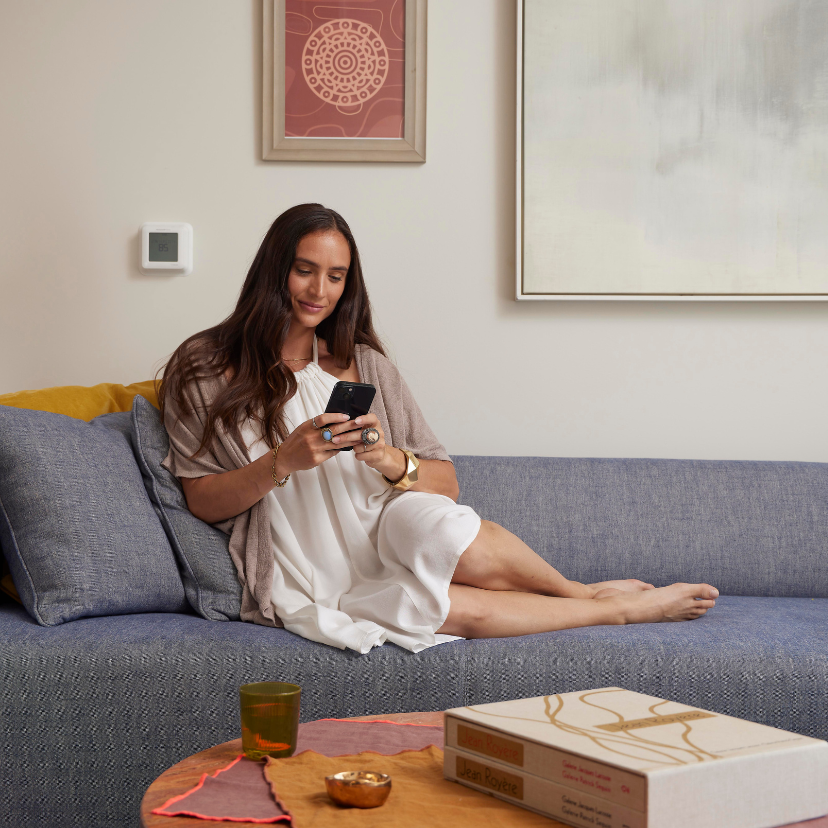
2. Invest in integrated connectivity
You’re using smart technology to provide the comfort- and convenience-focused services that residents demand — and the foundation of that technology is its connectivity.
Smart device connectivity is what powers smart tech platforms and unlocks convenience and efficiency. It’s what enables the impactful experiences that entice residents to sign a lease, like being able to remotely grant access to a dog walker or flip on the AC on their way home from work. It also enables operational efficiencies that save staff time and money, like automating vacant unit management and leak detection alerts.
Too often, people assume that smart device connectivity is the same as internet connectivity — that as long as you have an internet connection, your smart devices will be ‘connected.’ The reality is that device connectivity is separate from other required connections, like your broadband network and your EV charging station connections. To successfully deliver positive, resident-focused experiences, those connectivity networks need to be thoughtfully designed with your unique property in mind.
Look for a smart tech partner that:
- Consistently delivers high connectivity uptime: 70% or 80% uptime won’t cut it, because spotty connectivity isn’t just an inconvenience — it prevents residents from accessing their homes and causes critical notifications to be missed.
- Offers high-quality hardware: The connectivity hardware and smart devices themselves should be built to the same enterprise-grade standards of top-tier consumer brands because platform performance depends on functioning hardware. Plus, renters will see right through poor-quality hardware.
- Delivers hardware that operates with multiple protocols: Opting for a vendor whose smart device connectivity effortlessly adapts to future innovation will spare you the hassle and expense of ripping and replacing your hardware every few years. If the hardware operates with multiple protocols, your property can support new devices, consumer trends, and technology advancements as they become available.
Don’t overlook your broadband network
Beyond smart device connectivity, internet connectivity is a crucial consideration.
Your provider should be able to guide you through the most important factors — for example, ensuring there are multiple conduits into the building, having an additional line available in an IDF closet to enable services that will be demanded in the future, and making sure units have network access in discrete locations.
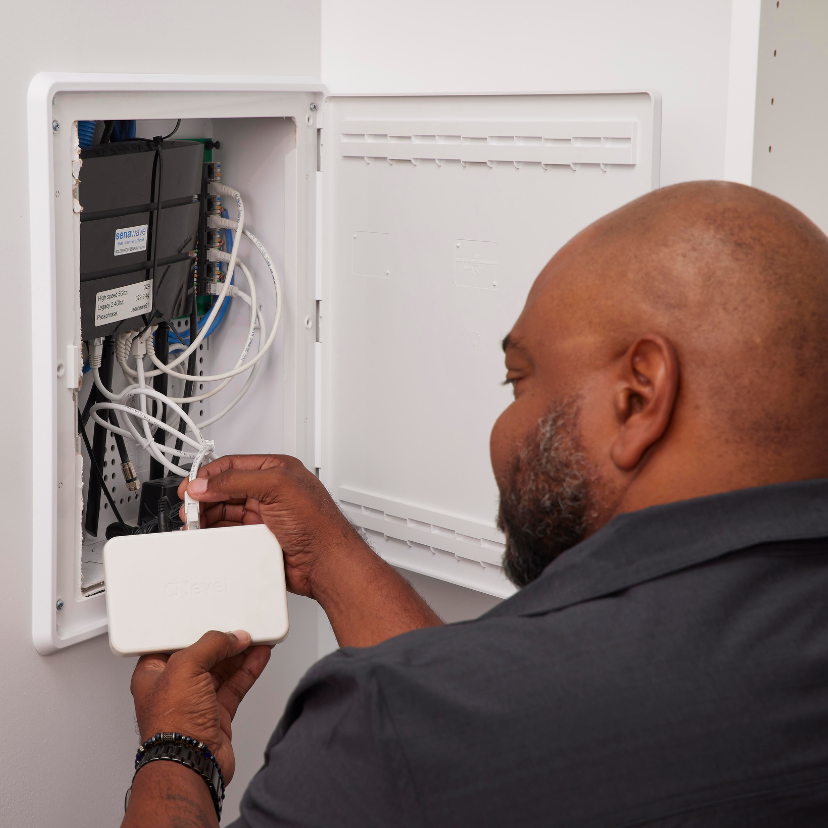
3. Work with experienced and accountable technology partners
The devices you choose to install in your building matter. But smart technology requires a more comprehensive implementation plan than simple software technologies. As a result, the smart tech provider you partner with will ultimately make or break your investment.
This is because your investment’s success hinges on:
- The quality of the solution design
- How effectively they deploy the technology
You need a knowledgeable partner who deeply understands the relationship between their smart tech solution and the other technologies and infrastructure in your building. A vendor that overlooks that relationship puts you in a vulnerable position.
Choose a partner who can design a solution that meets your property’s specific needs and accommodates future goals, like adding more smart devices later on down the road. Proactively designing with those additions in mind ensures you’ll be able to meet future resident demands without additional spending to adapt the infrastructure.
Experience matters
Your partner needs to deeply understand the technical and environmental dependencies for the tech solution they’re providing. An inexperienced vendor could fail to uncover crucial requirements in a timely fashion, leaving you with a slew of unexpected costs.
For example, that oversight could leave you rush ordering parts, changing the scope of work for a low voltage contractor, or falling behind on your schedule — all of which create a longer road to stabilization.
Your tech vendor also needs to know how to productively collaborate with other stakeholders in the development process to execute efficiently. A vendor that fails to communicate early and often with other stakeholders creates tension for everyone involved and adds work to the developer’s plate if they want to deliver on time and on budget.
Accountability is key
In the event that something does go wrong — for example, something gets overlooked during a field survey — will your smart tech partner make things right or point fingers at others?
Working with a vendor who won’t own up is frustrating and time-consuming. Opt for a provider who will cover any unforeseen costs that arise as a result of their oversight.
How to ensure you’re making the right investment
We’ve explained why setting your property apart is so important right now. And we’ve illustrated what you can do to gain that competitive edge today and into the future.
But how do you make sure you’re investing in the right technology — tech that will actually help your building stand out and capture present and future demand?
If you’re considering a smart tech platform, ask yourself the following questions before signing a contract:
Does it create an experience that entices prospects?
We covered how residents want impactful smart tech that actually streamlines their day-to-day lives. So does the tech you’re considering reliably and positively impact residents’ daily vital tasks?
Keep in mind that these tasks are meaningful, like:
- Accessing and navigating the building effortlessly.
- Remotely managing the temperature and conserving energy.
- Safely granting access to guests and service providers without hindering convenience.
Taking that a step further, you should also ask whether the vendor can guarantee reliable device uptimes. Devices that only work 70% of the time won’t cut it for residents expecting a premium experience — especially when those devices are powering undeniably important functions, like safely entering their apartments and ensuring comfortable temperatures.
Is the hardware designed for the future?
The tech you invest in today should allow for future developments. So is the provider’s hardware designed with longevity and future technological advancements in mind?
Demand a smart device connectivity solution that’s multi-protocol enabled. This ensures that your system can accommodate various types of devices, modes of connectivity, and whatever the next big tech trend might be.
Is it flexible?
Can the tech you’re considering accommodate the unique property styles in your portfolio? Will it scale effortlessly across your portfolio today and in the future?
While smart tech design requires a property-by-property approach, you shouldn't have to evaluate providers every time. Find someone who can offer a solution for your entire portfolio, from BTRs and garden-style to mid-rise and high-rise projects.
Take the next step
Smart technology’s unique ability to optimize resident experiences makes it a worthwhile investment for developers seeking a long-term solution to stand out. But only the right technology will deliver the outcomes you’re looking for.
Level M is the next-generation smart apartment and property automation platform for multifamily. With revolutionary hardware and premium user experiences, Level M uniquely delivers smart access control, property automation, and building intelligence solutions that are cost-effective, dependable, and future-proof.
Thought Leadership
More about Industry Insights
Whether you’re working, living, or just visiting,

